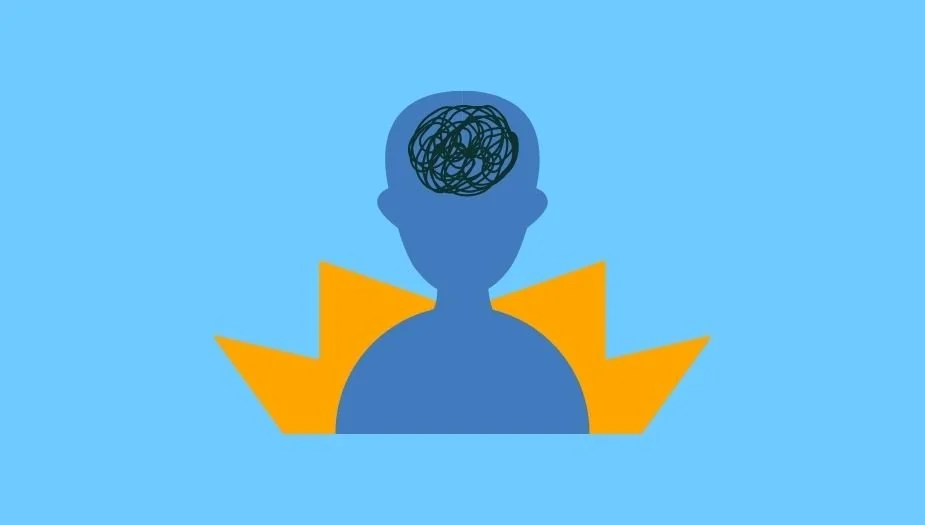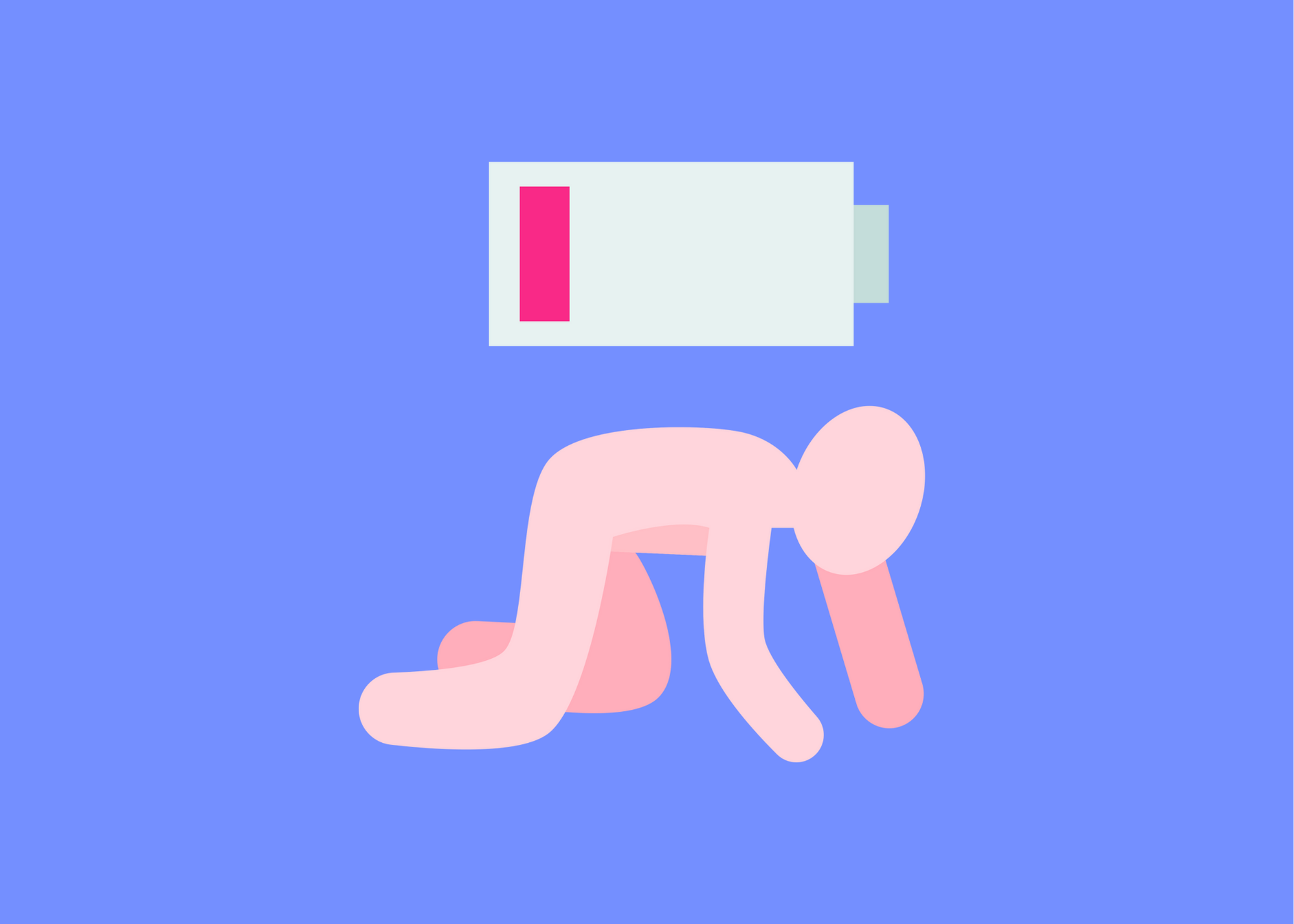Burnout Hijacks Your Brain: Why Stress Shuts Down Logic, Strategy, and Executive Function
Burnout breaks your brain—Here’s how to reset it.
Ever feel like your brain just…stops working when you’re under extreme stress? Like the ability to make a simple decision—let alone plan your future—has been hijacked? You’re not imagining it.
Dr. Aditi Nerurkar, a Harvard physician and stress expert, explains this perfectly: when you’re burned out, your prefrontal cortex—the part of your brain responsible for logic, planning, and executive function—shuts down. Meanwhile, your amygdala—the tiny, almond-shaped part of your brain responsible for stress and fear—takes over. Welcome to survival mode, where your brain is primed to react, not reason.
Here’s the kicker: This isn’t just psychological. It’s physiological and neurological. Your body is responding to chronic stress like you’re being chased by a lion, except the “lion” is your overflowing inbox, back-to-back meetings, or the relentless pressure to perform.
The Science Behind Burnout and Decision Paralysis
How Burnout Hijacks Your Brain
Your brain is an energy-efficient machine. When stress is temporary, your prefrontal cortex and amygdala work together seamlessly—your thinking brain assesses risks, makes decisions, and navigates challenges with reason. But when stress becomes chronic, the balance shifts. Your prefrontal cortex shuts down, leaving your amygdala to run the show. The result? You’re operating on pure instinct, making reactive choices instead of strategic ones.
This shift is why burnout makes simple decisions feel impossible. Your ability to plan, weigh pros and cons, and think long-term is biologically compromised. Instead, your brain defaults to short-term survival thinking—which often leads to bad decisions, procrastination, and feeling trapped in a cycle of stress.
Worse, chronic stress rewires your brain to keep you stuck in this reactive state. The more your amygdala is in control, the harder it becomes to engage your prefrontal cortex again. It’s like a muscle—if you don’t use it, it weakens.
Horizonlessness: When the Future Disappears
Enter horizonlessness, a term that describes the feeling of having no sense of what’s next. You’re so deep in stress that you can’t even see beyond the next task, the next email, the next crisis.
This isn’t just a feeling—it’s a biological response. Chronic stress shuts down your ability to mentally project into the future, making planning and decision-making feel impossible.
The result? You get stuck in a loop of reacting instead of strategizing. Your career, relationships, and health suffer, not because you lack discipline, but because your brain is literally locked in crisis mode.
The Delayed Stress Response: Why You’re Not Fine (Even If You Think You Are)
One of the sneakiest aspects of burnout is the delayed stress response. Maybe you think you’re managing fine, but then—bam—you get sick on vacation, break down over something trivial, or suddenly feel incapable of handling basic tasks.
Why? Because when you’re in constant fight-or-flight, your body suppresses non-essential functions (like immune response, digestion, and deep thinking). Once the immediate stressor is removed, the backlog of stress hits all at once.
Why Logic, Strategic Planning, and Executive Function Become Impossible
Burnout doesn’t just make you tired—it fundamentally changes how your brain functions. The prefrontal cortex, which handles logic, planning, and executive function, is essentially offline. This makes everyday tasks feel insurmountable.
Real-Life Examples:
Decision Fatigue: Even choosing what to eat for dinner feels overwhelming. You default to takeout again—not out of laziness, but because your brain can’t process another decision.
Inability to Plan: You have a big project due, but instead of breaking it down into steps, you stare at your screen, paralyzed by where to start.
Emotional Reactivity: Small inconveniences trigger outsized reactions. You snap at a coworker or cry over spilled coffee because your amygdala is running the show.
How to Function When You’re Burned Out
1. If Possible, Reduce Your Workload
A full sabbatical isn’t always realistic, but small adjustments can help:
Speak to your manager about temporary workload adjustments.
Set clear boundaries on your availability.
Offload non-essential tasks or delegate where possible.
2. Shift Expectations at Home and Work
Lower the bar: This isn’t the time for perfectionism. Prioritize what’s essential and let go of the rest.
Use scripts: If you struggle to say no, have pre-planned responses like: “I’d love to help, but I can’t take on anything extra right now.”
Lean on routines: The fewer decisions you have to make, the better. Automate meals, set work start/end times, and simplify chores.
3. Make Decisions Easier
Use defaults: Wear the same outfits, eat the same breakfast, follow set routines.
Chunk tasks: Group similar activities together to reduce switching costs on your brain.
Create if-then plans: “If I feel overwhelmed, then I will take a 5-minute walk.”
4. Prioritize Nervous System Recovery
Walking, not scrolling: Walking helps reset your brain, while doomscrolling keeps you stuck in stress mode.
Deep breathing and mindfulness: Even 1-2 minutes of breathing exercises can re-engage your prefrontal cortex.
Adequate sleep: Your brain cannot heal if you’re sleep-deprived. Prioritize rest, even if it means saying no to evening plans.
When to Get Help from a Health Coach or Therapist
Signs You Need Professional Support
You’re stuck in a cycle of exhaustion, no matter how much you rest.
Decision-making feels impossible, and you’re constantly overwhelmed.
Your stress is impacting your health, relationships, or career.
You’re using unhealthy coping mechanisms (e.g., excessive caffeine, alcohol, or avoidance).
You feel disconnected from yourself and your goals.
How a Health Coach Can Help
Identify daily habits that contribute to burnout.
Create sustainable strategies to reduce stress.
Provide accountability for lifestyle changes.
Help you build resilience so you can handle future stress more effectively.
How a Therapist Can Help
Address deep-seated patterns that contribute to chronic stress.
Teach cognitive strategies to reframe negative thought patterns.
Help you navigate workplace stress, trauma, or anxiety disorders.
NOTE: If your burnout is leading to severe anxiety, depression, or physical symptoms (like chronic pain or digestive issues), therapy is your best starting point. If you need structured lifestyle changes and practical stress management strategies, a health coach can help bridge the gap between knowing what to do and actually doing it.
The Long-Term Fix: Building Burnout Resilience
Burnout recovery isn’t just about escaping stress—it’s about training your brain and body to handle stress differently. Here are the key habits that help build long-term resilience:
Daily Micro-Recoveries
Instead of waiting for vacations to recover, integrate short, daily breaks that give your nervous system a chance to reset.
2-minute breathwork between meetings.
5-minute movement breaks to shake off tension.
Tech-free meals to fully disconnect.
Redefine Productivity
Real productivity isn’t about squeezing in more tasks—it’s about sustaining your energy and focus.
Work in ultradian cycles (90-minute focused work, followed by a break).
Stop glorifying overwork as a badge of honor.
Prioritize deep work over busy work.
Rewire Your Brain for Calm
Chronic stress keeps your brain stuck in a reactive loop. To break free:
Practice mindfulness to strengthen your prefrontal cortex.
Engage in play and creativity to restore mental flexibility.
Get into nature (even a city park) to calm your nervous system.
Final Thoughts
Your brain isn’t broken—it’s stuck in survival mode. The good news? It’s possible to reset, but it requires small, consistent actions that tell your body and brain that you’re safe.
Burnout recovery isn’t about waiting for the perfect moment to “fix” yourself. It’s about stacking small wins, reconnecting with others, and allowing your nervous system to recalibrate—one small step at a time.
Now, take a deep breath. That was your first step.
Need Help? You can’t out-hustle burnout—and you’re too smart to keep trying.
If stress is tanking your focus, energy, or health, it’s time to get strategic.
🎯 Book a free 20-minute strategy session and get a science-backed game plan tailored to your life, not someone else’s ideal morning routine.
Article References
The sources cited in the article:
Choosing Therapy. "What Is Decision Fatigue: Definition, Examples, & How to Deal With It." Choosing Therapy - Decision Fatigue
Psychology Today (PT). “Is Burnout Making You Dumber?” PT - Is Burnout Making You Dumber?
healthline. “Understanding Decision Fatigue.” healthline - Understanding Decision Fatigue
Psychology Today (PT). "Is Decision Overload Affecting Your Mental Health?" PT - Is Decision Overload Affecting Mental Health?
Cleveland Clinic . “8 Signs of Decision Fatigue and How to Cope.” Cleveland Clinic - Decision Fatigue
Harvard Business Review (HBR). "Beating Burnout.” HBR - Beating Burnout
Forbes. “How Burnout Affects Your Decision Making Process and How to Fix It.” Forbes - Burnout and Decision Making






